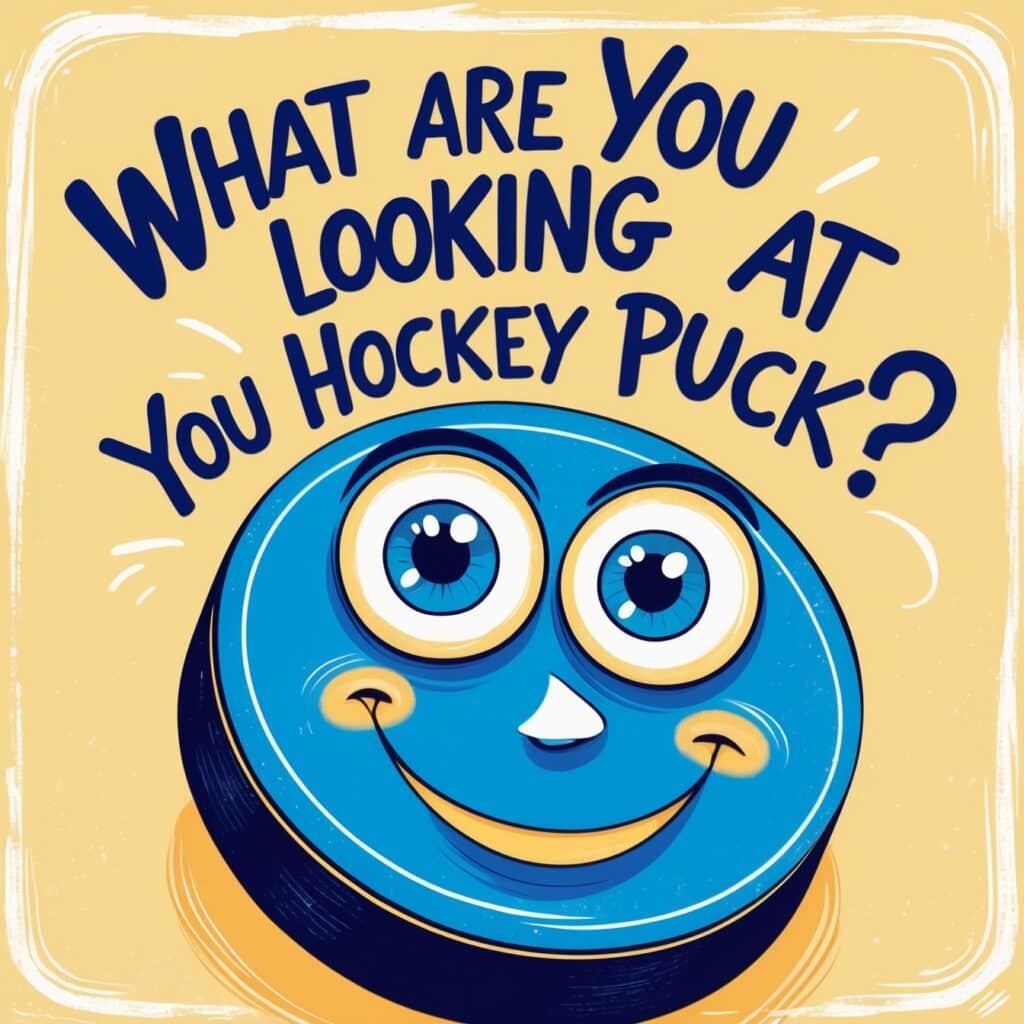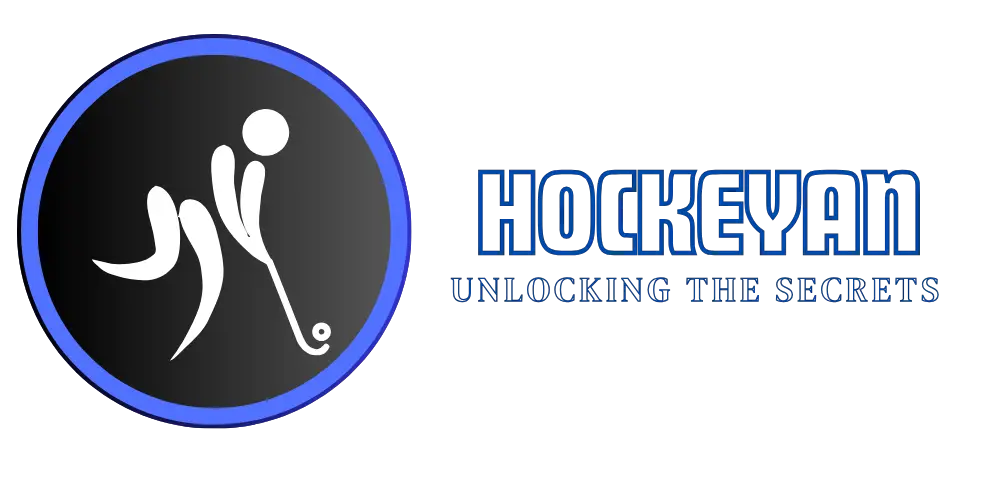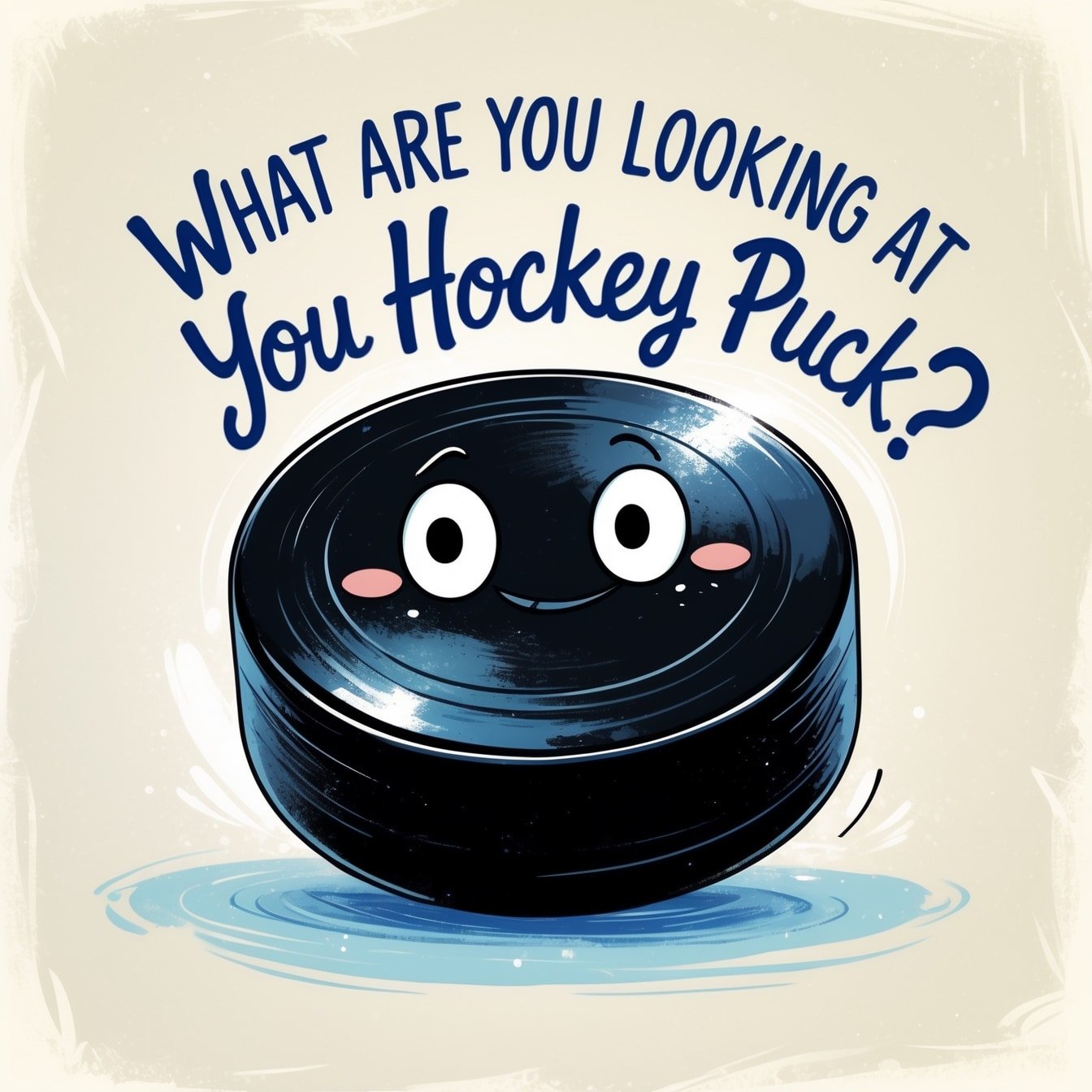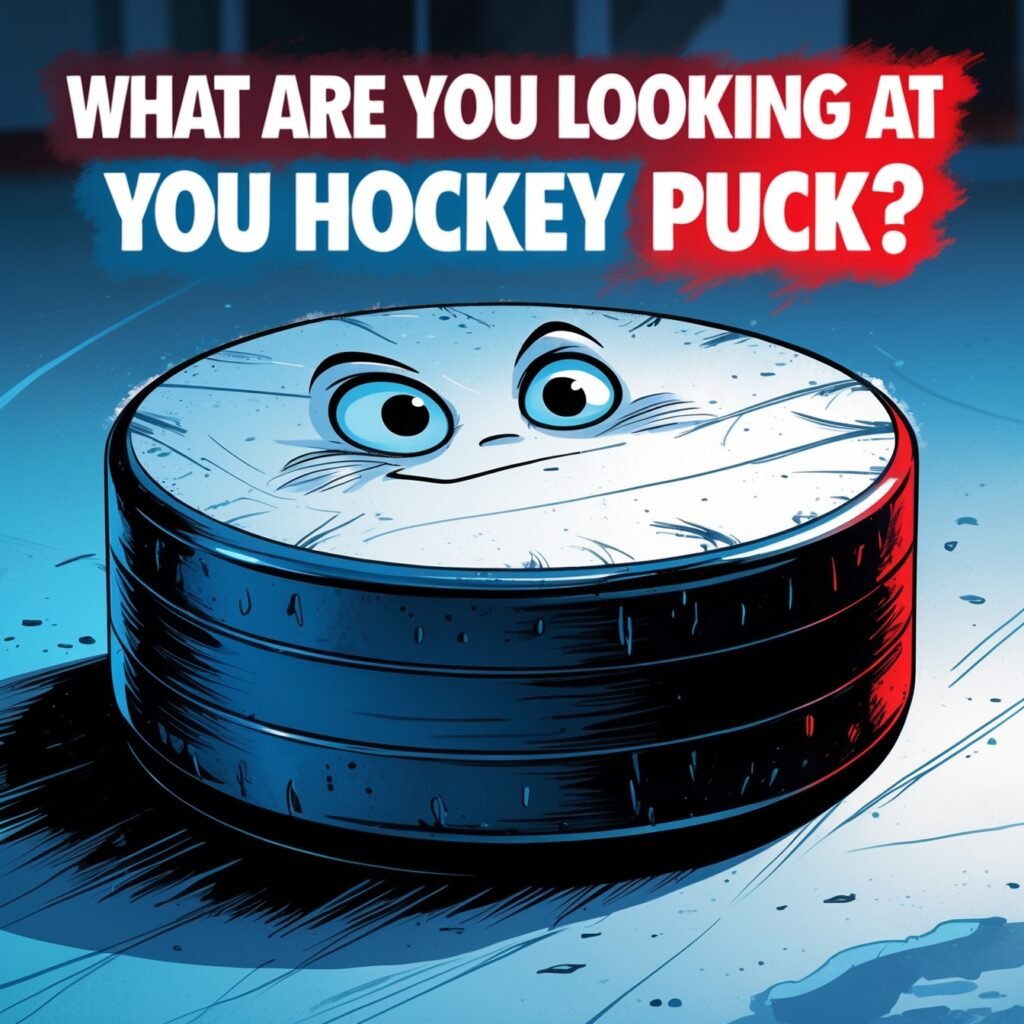What are you looking at you hockey puck? It’s a phrase that captures attention.
But what does it really mean? This quirky phrase, popularized by Disney’s animated character, makes many curious. It may sound odd, but it holds a unique charm. In this blog, we’ll explore its origins and usage. We’ll dive into the cultural impact it had over the years.
And, we’ll see how it connects to hockey and beyond. Whether you’re a sports fan or a pop culture enthusiast, this phrase has a story worth knowing. So, let’s uncover the mystery behind this intriguing expression.
Origins Of Hockey Jargon
Hockey jargon is colorful and unique. It adds flavor to the game. Where did these terms come from? Let’s explore the origins of hockey jargon. We’ll look at early terminology and influences from other sports.
Early Terminology
Hockey started in the 19th century. Early players used basic terms. Words like “puck,” “stick,” and “goal” were common. Over time, the language evolved. Players invented new words. They wanted to describe moves and plays. For example, “hat trick” came from cricket. It means scoring three goals in one game. Another term, “faceoff,” describes the start of play. It’s similar to a jump ball in basketball.
Influences From Other Sports
Hockey borrowed words from other sports. Soccer and rugby influenced hockey jargon. Terms like “offside” and “penalty” came from these sports. They describe rules and penalties. Baseball also contributed. The term “assist” is used in both sports. It means helping to score a goal. Hockey players adapted these terms to fit their game.
Hockey jargon continues to grow. New terms appear every season. They reflect changes in the game. Fans and players enjoy the colorful language. It makes hockey unique and fun.
Common Hockey Terms
Hockey can seem like a different language to newcomers. Understanding common hockey terms can help you enjoy the game more. This section breaks down key phrases and positions on the ice. Get ready to impress your friends with your hockey knowledge!
On-ice Positions
Each player has a specific role on the ice. Knowing these positions helps you follow the game better.
- Goalie: The player who guards the net. Their job is to stop the puck from entering the goal.
- Defensemen: Two players who help protect the goal. They also try to get the puck to their forwards.
- Forwards: Three players who aim to score goals. They include the center, left wing, and right wing.
- Center: The player who leads the offense and takes faceoffs. They also help in defense.
- Wingers: The left and right wing players. They support the center and focus on scoring.
Game Play Phrases
Hockey has many unique terms. Here are some you might hear during a game.
- Faceoff: The method to start play. The puck is dropped between two opposing players.
- Power Play: When a team has more players on the ice. This happens because the other team has a player in the penalty box.
- Penalty Kill: The team with fewer players tries to stop the other team from scoring.
- Hat Trick: A player scores three goals in one game. Fans often throw hats onto the ice to celebrate.
- Slap Shot: A powerful shot with a big wind-up. It’s one of the fastest shots in hockey.
- Body Check: Using the body to stop or block an opponent. It’s a legal move to gain control of the puck.

Player Slang
Hockey players have their own language. It includes unique slang and expressions. This lingo is colorful and fun. It makes the game more interesting. Players use these terms to describe equipment, actions, and each other. This section will look at some common player slang.
Nicknames For Equipment
Hockey gear has many nicknames. Here are some popular ones:
- Biscuit: The puck. Players say, “Pass the biscuit.”
- Twigs: Hockey sticks. A player might say, “I need a new twig.”
- Buckets: Helmets. You might hear, “Put your bucket on.”
- Wheels: Skates. A player might brag, “I have new wheels.”
- Mitts: Gloves. Players might say, “Nice mitts.”
Chirping And Trash Talk
Players often use chirping to tease opponents. It is part of the game. Here are some common phrases:
- Sieve: A bad goalie. “You’re a sieve!”
- Duster: A player who rarely plays. “Hey duster, enjoy the bench.”
- Pigeon: A player who only scores easy goals. “Nice goal, pigeon.”
- Plug: A player with little skill. “You’re just a plug.”
- Gongshow: A chaotic game. “This game is a gongshow.”
Chirping adds excitement to the game. It is often funny. But, it can also get serious. Players must know their limits. They should avoid crossing the line. Respect is important, even in trash talk.
Fan Vocabulary
Fan Vocabulary is essential for anyone new to the world of hockey. Whether you are at a live game or watching from home, knowing the right phrases can enhance your experience. This section will introduce you to the most common cheering phrases and arena lingo.
Cheering Phrases
Cheering phrases are what fans shout to support their team. Here are some popular ones:
- Let’s Go [Team Name]! – A classic chant to motivate the team.
- He Shoots, He Scores! – Celebrate a goal with this shout.
- Defense! Defense! – Encourage the team to stop the opponent.
- Power Play! – Cheer when your team has a player advantage.
Arena Lingo
The arena has its own language. Knowing these terms will help you fit in:
- Zamboni – The machine that smooths the ice.
- Faceoff – The method to start play.
- Hat Trick – When a player scores three goals in one game.
- Penalty Box – Where players go when they break the rules.
Understanding these phrases and terms can make your hockey experience more enjoyable. You will be cheering along with the crowd in no time!
Modern Hockey Jargon
Hockey has its own language, and it keeps changing. Modern hockey jargon blends tradition with new trends. This dynamic mix keeps the sport lively and engaging. Today’s players and fans use fresh terms. These terms reflect the game’s evolution and the impact of technology.
Social Media Influence
Social media plays a big role in modern hockey jargon. Players and fans share their thoughts online. This rapid exchange of ideas creates new terms. A phrase can spread quickly. Soon, everyone uses it. Social media platforms like Twitter and Instagram are hotspots. They foster a community where new hockey terms are born daily. The fast-paced nature of social media means the language of hockey is always evolving.
Evolving Terminology
The language of hockey evolves with the game. New techniques and strategies need new words. For example, “dangle” and “sniper” are now common terms. These words describe specific skills and plays. Players and fans adopt these terms. They become part of the daily conversation. As hockey continues to change, so does its language. New terms will keep emerging. The game’s vocabulary will keep growing.

Credit: www.reddit.com
Frequently Asked Questions
What Is A Hockey Puck?
A hockey puck is a small, hard rubber disk used in ice hockey.
Why Is It Called A Hockey Puck?
The term “puck” likely comes from the Scottish word “puc,” meaning to poke or hit.
What Are Hockey Pucks Made Of?
Hockey pucks are made of vulcanized rubber, making them durable and tough.
How Much Does A Hockey Puck Weigh?
A standard hockey puck weighs between 5. 5 and 6 ounces.
How Fast Can A Hockey Puck Travel?
A hockey puck can travel up to 100 miles per hour during a game.
Why Are Hockey Pucks Frozen Before Games?
Frozen pucks slide better on ice and bounce less, improving game play.
How Are Hockey Pucks Manufactured?
Pucks are molded from rubber, then compressed and vulcanized for strength.
Can Hockey Pucks Break?
Yes, under extreme conditions like powerful shots or very cold temperatures, pucks can break.
Why Do Hockey Players Call Each Other “hockey Puck”?
“Hockey puck” can be a playful or teasing term among players, often implying toughness.
Conclusion
Exploring hockey pucks reveals their unique role in the sport. These small disks drive the game, creating excitement and challenges. Knowing their history and design enhances your appreciation. Next time you watch or play hockey, notice the puck’s impact. It’s more than just a piece of rubber.
It’s a symbol of skill, speed, and strategy. Understanding it adds depth to your hockey experience. Appreciate the puck, and enjoy the game even more. Hockey wouldn’t be the same without it.





